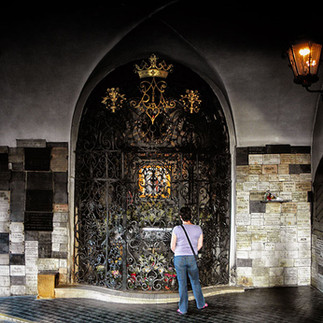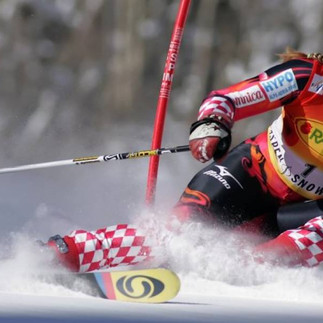Zagreb, Capital City: The Heart and Soul of Croatia
- Teo Drinkovic
- 47 minutes ago
- 7 min read
Discovering Zagreb City, the Rich History, Culture, and Winter Magic of Croatia’s Capital

Introduction
After introducing you to many of Croatia’s beautiful cities and its stunning landscapes, it’s time to take a deeper dive into its beating heart, the capital city, Zagreb. As the political center, the largest and most populous city in Croatia, Zagreb carries the weight of history, culture, and power. Its past is woven with the threads of multiple rulers: from the Habsburg Monarchy to the Kingdom of Yugoslavia, through the upheavals of the 20th century, until it found its rightful place as the capital of the modern Republic of Croatia.
Throughout its evolution, every era left its mark on Zagreb’s architectural fabric, giving us palaces, wide squares, historical buildings, and green spaces that tell a story.
If you decide to visit Zagreb, there’s one thing you can be sure of: it is a city that will not leave you indifferent.
Geographic Setting of Zagreb
Zagreb is located in north-central Croatia, in a lowland area beside the Sava River, sitting at an altitude of around 122 meters above sea level.
But its territory rises dramatically to the Medvednica mountain range, whose highest peak, Sljeme, reaches about 1,035 meters. Because the city straddles both the Pannonian plain and the hilly terrain of Medvednica, Zagreb enjoys a very diverse relief and climate.
The total area of the city is roughly 641.24 km². According to the 2021 census, Zagreb has a population of about 767,131 people. Wikipedia

A Journey Through Time: From Gradec and Kaptol to Modern Metropolis
Zagreb’s history begins in the Middle Ages, on two neighboring hills: Kaptol and Gradec. In 1094, King Ladislaus established a diocese on the Kaptol hill, which slowly evolved into a settlement of canons, craftsmen, and church officials. Over time, Kaptol became an ecclesiastical hub, while Gradec developed under more secular rule.
In 1242, after the Mongol (Tatar) invasions, King Béla IV issued a Golden Bull granting Gradec the status of a free royal city, giving its citizens rights to self-governance, judiciary authority, and the right to hold fairs, laying the foundation for an independent urban life.
For centuries, Gradec and Kaptol existed as separate entities: Gradec under royal, secular rule, and Kaptol governed by the church. Between 1512 and 1520, defensive walls were built around Kaptol in response to the Ottoman threat. In the 17th and 18th centuries, Zagreb underwent a Baroque transformation, replacing medieval wooden houses with grand palaces, monasteries, and churches.
A pivotal moment came in the 19th century: on 7 September 1850, Gradec, Kaptol, and the surrounding settlements were unified into a single city, the modern city of Zagreb. This unification was formalized by an imperial decree, and Janko Kamauf became the city’s first mayor.

In 1880, a strong earthquake struck Zagreb, destroying a large part of its core. However, out of this disaster came renewal: Hermann Bollé led the restoration efforts, rebuilding the cathedral and public buildings, creating new parks, roads, and modern infrastructure. In the late 19th and early 20th century, Zagreb grew as an administrative, cultural, and economic center, with the establishment of schools, theaters, the University, and the Academy of Sciences.
During the 20th century, especially under Yugoslavia, Zagreb expanded into the Sava lowlands, becoming more industrialized and residential. After Croatia’s independence in 1991, Zagreb solidified its role as the political and cultural capital of the country.
From two separated hills, Zagreb became a modern European metropolis: a city with deep historical roots, strategic importance, and profound national meaning.
Zagreb as Croatia’s Political Heart & Symbol of Power
Zagreb is not just the cultural capital, it’s the political core of Croatia. In the Upper Town (Gornji Grad) lies the Croatian Parliament (Sabor), housed in the iconic building on St. Mark’s Square. The building, which blends classical, Secessionist, and neo-Renaissance styles, took on its final form in 1911, after extensive modifications.
The Sabor has met here for centuries; although parliamentary sessions date back as early as the 13th century, the permanent parliament building only came into being in the 18th century. The 2020 earthquake forced a temporary relocation of the Sabor, but the symbolic importance of the Upper Town as the seat of power remains unchanged.
Government buildings, parliamentary halls, and churches are framed by historic architecture, a constant reminder that Zagreb is more than a tourist spot.

Attractions & Historic Heritage
The Upper Town: The Old Soul of Zagreb
Walking through the Upper Town (Gradec and Kaptol) feels like stepping into a different age. Stone-paved alleys, gas lamps (still lit by lantern lighters in the evening), and historical passages filled with centuries of stories create a magical atmosphere.
Every evening, “lamp-lighters” go through the streets to ignite the gas lamps, and in the morning, they extinguish them, a rare tradition in modern European capitals.
A few must-see places:
Stone Gate (Kamenita vrata): The remaining part of the medieval city walls. Inside, there’s a chapel with an image of the Blessed Virgin Mary, which, according to local belief, is miraculous.
St. Mark’s Church: Easily recognizable by its colorful tiled roof featuring the coat of arms of Zagreb (a white castle on red) and the historic Croatian regions: Croatia, Slavonia, and Dalmatia. If you look closely at the architectural patterns, you’ll notice designs inspired by folk textile embroidery, a nod to traditional Croatian weaving. The interior, remodeled in the late 19th century, is decorated with works by Ivan Meštrović and Jozo Kljaković.
Lotrščak Tower: A defensive tower from the 13th century. At noon every day, a cannon fires from its walls to mark the exact hour, a quirky but beloved tradition.
Source: Google.com
The Cathedral
The Cathedral of the Assumption of the Blessed Virgin Mary, located in Kaptol, is a dominant feature of the city skyline. Its two slender towers (around 105 meters tall) are visible from many parts of Zagreb.
Despite damage from past earthquakes, the cathedral has been fully restored and remains a symbol of both faith and history.

Parks & Green Spaces
Zagreb is a green city. In the Lower Town (Donji Grad), there is a horseshoe-shaped park system designed by the Italian architect Lenuzzi, which connects cultural institutions, elegant palaces, and city avenues.
On the slopes of Medvednica above the city, you’ll find Medvedgrad, a medieval fortress, and scenic lookouts offering panoramic views.
Source: Google.com
Unique Ways to Explore Zagreb
Funicular (“Uspinjača”): One of the world’s shortest funiculars — just 66 meters long, climbing about 30.5 meters — connects the Lower Town with the Upper Town.
Sljeme Cable Car: A newer attraction (opened in 2022) that takes passengers from Gračan dol all the way to the peak of Sljeme on Medvednica. The ride offers breathtaking views of the city and the surrounding hills.
Source: Google.com
Symbols & Traditions: Umbrellas, Licitar Hearts & Majorettes
Some of Zagreb’s most joyful symbols come from its traditions:
Šestine umbrellas: Bright red umbrellas with stripes, originating from the Šestine village above Zagreb. They’ve become a symbol of the city and a popular souvenir.
Licitars (Licitarska srca): These are decorated gingerbread hearts, a classic of Zagreb culture. Given as gifts, they represent love and tradition.
Zagreb majorettes: A group of young dancers who perform at celebrations, parades, and official events. They’re known as the “guardians of the city keys,” a vibrant living symbol of Zagreb’s spirit.
Winter Magic: Advent & the Snow Queen
Zagreb truly shines during winter. It's Advent has been named the Best Christmas Market in Europe multiple times, thanks to a lively mix of lights, music, food, and festive energy.
In 2025, CNN Travel again listed Zagreb as one of the world’s best Christmas markets. CroatiaWeek.com
During Advent, dozens of city squares come alive with Christmas stalls, ice sculptures, concerts, and even a Christmas tram with Santa and his elves. This festive transformation helps explain why Zagreb has repeatedly earned top honors. news.cgtn.com
Another winter highlight is the Snow Queen Trophy, an alpine ski race held on the Sljeme slope (also known as Crveni spust). Named after Janica Kostelić, Croatia’s most decorated skier, the winner is crowned with a crystal crown and cloaked in a royal mantle. It’s more than a sport: it’s part of Zagreb’s identity. Unfortunately, due to climate change and rising temperatures, the race hasn’t been held in recent years, but many hope it will return.
Source: Google.com
Culture, Museums & Daytime Life
If you’re into culture and history, Zagreb has plenty to keep you busy:
In the Upper Town, you can explore the Museum of the City of Zagreb, the charming Museum of Broken Relationships, historic churches, viewpoints, and the funicular.
The Lower Town features the Croatian Academy of Sciences and Arts (HAZU), modern galleries, and theaters.
Parks such as Zrinjevac, Ribnjak, and Lenuzzi’s alleys are wonderful for relaxing walks.
For a nature escape, Medvednica above the city offers hiking trails, lookouts, and tranquil green spaces.
Gastronomy & Wines: Taste of Zagreb
Zagreb’s culinary identity is a delicious mix of tradition and modern influence:
Zagorski štrukli: Dough filled with fresh cheese — can be boiled or baked. Served as a starter, main course, or dessert, these are staples in many local restaurants.
Ajngemahtec (Eingemachtec): A traditional Zagreb soup with clear chicken broth, vegetables, and small dumplings. It has Austrian roots and feels like a warm hug on a cold day.
Zagreb-style schnitzel: Thin veal or pork, stuffed with ham and cheese, breaded and fried to golden perfection — similar to Wiener schnitzel but with a local twist.
Zagreb kremšnita (creme‑slice): Puff pastry layered with silky vanilla custard and often whipped cream — a sweet classic you’ll find in local pastry shops.
In terms of drinks, you can explore domestic wines, local craft beers, or traditional winter beverages like mulled wine and punch, especially during Advent.
Restaurants worth checking out include Stari Fijaker, La Štruk, and Gostionica Purger, all praised for their authenticity and traditional dishes.
Why You Should Visit Zagreb
If you ever find yourself in Croatia, you simply cannot skip Zagreb. It’s a city that tells stories of power, faith, resilience, and community. From the historic hills of Gradec and Kaptol to the modern streets of the Lower Town, every corner whispers of centuries past. The contrast between religious and secular, old and new, tradition and innovation is part of its magic.
Winter, especially during Advent, brings Zagreb alive in a way that few cities can match: lights sparkle, choirs sing, and streets feel enchanted. Add to that the grandeur of the Snow Queen ski race (when it’s on), and you get a city that’s not just urban, but snowy, royal, and timeless all at once. Visiting Zagreb doesn’t just mean seeing the capital; it means experiencing the soul of Croatia.



























